Did you know that using the right turkey call can make your hunt up to 80% more successful? Whether you’re trying to mimic the raspy yelp of a hen or the deep gobble of a tom, having a good-quality call can make all the difference.

With over 7 million turkey hunters in the U.S., it’s all about having the right tools to stand out. In this article, we’ll share the best turkey calls for 2025 that can help you attract more game and make your hunting trips truly unforgettable!
List Of The 6 Best Turkey Calls: Reviews & Recommendations
1. HS Strut Cookie Cutt’R Tracer Turkey Clucks
Best Overall
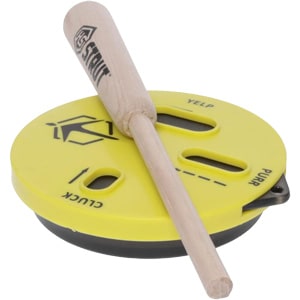
⚙ Main Specifications
- Type: Friction Pot Call
- Material: Injection-molded pot with slate surface
- Features: Removable quick-reference cap with pre-cut slots for yelping, clucking, and purring
- Included: Pot call and striker
2. HS Turkey Game Calls Combo Pack for Realistic Turkey Sounds
Combo Pack
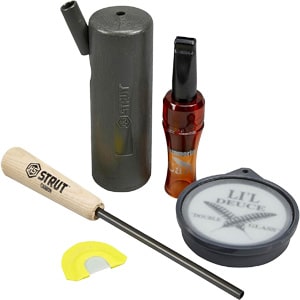
⚙ Main Specifications
- Type: Turkey Game Calls Pack
- Includes: Turkey, Crow, Owl, and Diaphragm Calls
- Features: Realistic sounds, durable, and easy to use
- Purpose: Attracts turkeys and other game
3. HS Premium Flex Frame Raspy Old Hen Diaphragm Mouth Turkey Call
Realistic Sound
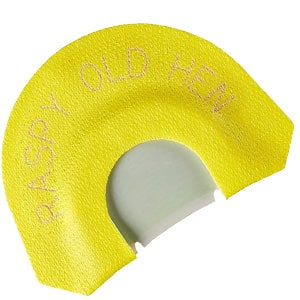
⚙ Main Specifications
- Type: Mouth Call
- Material: Flex Frame, Infinity Latex, yellow tape
- Reeds: 2 ultra-thin reeds for realistic sounds
- Sounds: Raspy yelps, cutts, clucks, and purrs
- Use: Durable, easy to use, suitable for all hunters
4. Quaker Boy The Wooden Box Turkey Call
Easy To Use
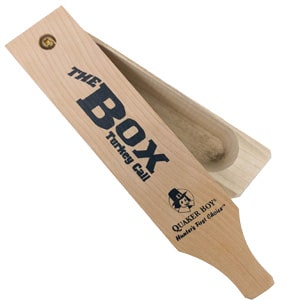
⚙ Main Specifications
- Type: Box Call
- Material: Wood
- Length: 7 1/2 inches
- Condition: Excellent, with a small non-affecting spit on the top piece
- Function: Produces realistic turkey sounds with a sliding motion
5. Flextone Loud True-to-Life Realistic Gobbles Sounds
FOR ALL LEVELS
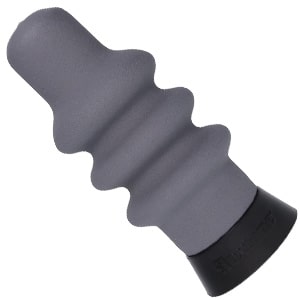
⚙ Main Specifications
- Type: Handheld Gobbler Call
- Design: Compact, easy-to-use bellows
- Function: Realistic gobble sounds with a simple shake
- Skill Level: Suitable for all hunters
- Material: Durable and portable
6. Duck Commander Hootie Owl Turkey Locator Call
Handy
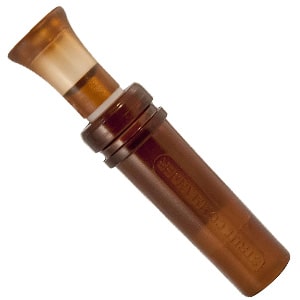
⚙ Main Specifications
- Type: Locator Call
- Design: Realistic barred owl hoot tones
- Function: Attracts gobblers with shock gobbles
- Skill Level: Suitable for all hunters
What Is a Turkey Call?
A turkey call is a tool hunters use to mimic the sounds of wild turkeys. These sounds, such as yelps, clucks, purrs, and gobbles, are used to attract turkeys by imitating their communication. Turkey calls come in various types like box calls, mouth calls, pot calls, and locator calls, each offering a unique way to replicate turkey sounds.
Why Do Hunters Need a Turkey Call?
Hunters need turkey calls to draw turkeys closer, especially when they’re out of sight. Turkeys are highly vocal birds, and using the right call can spark their curiosity or territorial instincts, making them approach the hunter’s position.
Types of Turkey Calls Used in Hunting
1. Box Calls
Box calls are a fantastic choice for beginners due to their ease of use and realistic sound. These friction calls are typically made of wood and produce sound by creating friction between the paddle and the box.
- Great for loud, realistic yelps and clucks.
- Ideal for quiet woods where their volume can carry far.
2. Push-and-Pull Calls
Push-and-pull calls are consistent and straightforward, making them ideal for beginners.
- Known for delivering reliable sounds that provoke a turkey’s reaction.
- Can produce a variety of vocalizations, even in challenging conditions.
- Often overlooked by seasoned hunters but highly effective for new hunters.
3. Diaphragm Calls (Mouth Calls)
Mouth calls are compact, hands-free, and budget-friendly but require practice to master.
- Work by using the tongue against a flexible rubber piece placed on the roof of your mouth.
- Excellent for hunters needing mobility or planning extended hunting trips.
4. Pot and Peg (Slate) Calls
Pot and peg calls consist of a circular surface (slate, glass, or aluminum) paired with a striker.
- Ideal for soft, natural clucks, purrs, and yelps.
- Highly versatile, allowing hunters to mimic a range of turkey sounds.
5. Crow Calls
Crow calls are locator calls designed to trigger a turkey’s shock gobble, helping hunters pinpoint their location.
- Best used when the woods are quiet and turkeys are less active.
- Mimics a crow’s caw, irritating gobblers into responding.
6. Gobbler Calls
These calls mimic the gobble of a male turkey, often used to challenge or attract dominant gobblers.
- Compact and easy to use, producing lifelike gobble sounds with a simple shake or motion.
- Effective in competitive scenarios to lure aggressive male turkeys.
Things to Consider While Choosing a Turkey Call for Hunting
1. Your Skill Level
If you’re just starting out, go for calls that are easy to use, like box calls or push-and-pull calls. These are straightforward and don’t need a lot of practice. If you’ve been hunting for a while and want more control, try diaphragm calls or gobbler calls. They might take some time to master, but they’re super versatile.
2. The Hunting Environment
Think about where you’re hunting. If the woods are quiet, louder calls like box calls or crow calls work great to get a turkey’s attention. In thicker, more crowded forests, softer calls like pot and peg calls are better to avoid scaring them off.
3. Sound Variety
It’s always a plus if a call can make different turkey sounds like yelps, clucks, and gobbles. Some combo packs come with multiple types of calls, giving you more options to adapt to different situations in the field.
4. Ease of Use
Box calls and push-and-pull calls are super beginner-friendly. They don’t require much skill and are great for quick results. On the other hand, diaphragm (or mouth) calls are hands-free and easy to carry but need quite a bit of practice to get right.
5. Material and Durability
Calls made from wood, like box calls, produce really natural sounds but need extra care to keep them in good shape. If you’re hunting in rough weather, synthetic materials are more durable and weather-resistant.
6. Purpose of the Call
What do you want the call to do? Locator calls like crow calls are perfect for finding where the turkeys are hiding. Gobbler calls are great for attracting dominant males by mimicking another gobbler, sparking competition.
7. Portability
If you’re moving around a lot or hunting for long hours, you’ll want something compact and lightweight. Diaphragm calls are small and easy to carry, while box calls might take up more space but are easier to operate.
8. Your Budget
If you’re new to turkey hunting, start with something affordable, like a push-and-pull or diaphragm call. If you’re more experienced and want premium options, go for combo packs or high-quality gobbler calls.
Frequently Asked Questions
1. What is the easiest turkey call for beginners?
Box calls and push-and-pull calls are the easiest for beginners. They’re simple to use and produce realistic sounds without much practice, making them ideal for first-time hunters.
2. How do I know which turkey call is best for me?
The best call depends on your experience, hunting environment, and preferred style. Beginners should opt for easy-to-use options like box or push-and-pull calls, while seasoned hunters might prefer diaphragm calls for hands-free use.
3. Can I use a turkey call in any weather?
Yes, but some calls perform better in specific conditions. Wooden calls, like box calls, might not work well in wet weather, while synthetic materials are more durable and weather-resistant.
4. How much practice is needed for diaphragm calls?
Diaphragm calls require a good amount of practice since they rely on tongue control and airflow. With consistent daily practice, you can master basic sounds in a few weeks.
5. What type of turkey call should I use for locating turkeys?
Locator calls, like crow calls or owl hoots, are perfect for finding turkeys. These calls trigger a gobbler’s natural response, helping you pinpoint its location.
Conclusion
Picking the right turkey call can really change your hunting game. Whether you’re using a box call if you’re just starting out or a diaphragm call if you’re more experienced, each one has something special to offer. Think about how easy it is to use, the sound it makes, and how durable it is when choosing. It takes practice to get good at using these calls, but it’s totally worth it when you’re successful on the hunt. With the right call, you’ll be ready to attract a turkey and make your hunting trip a success.
Leave a Reply